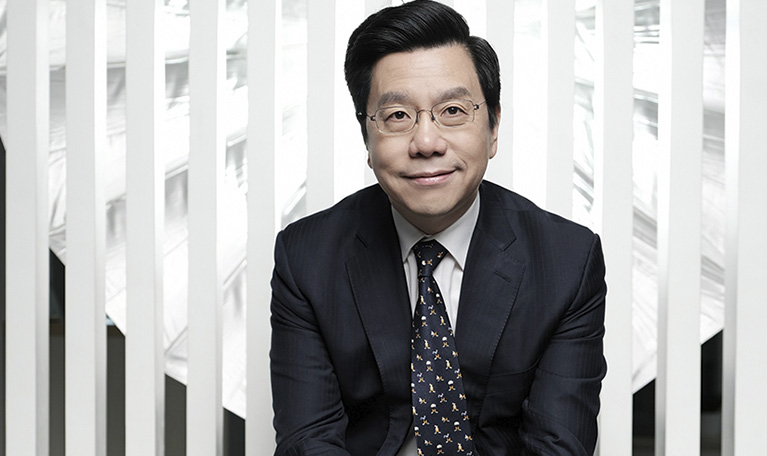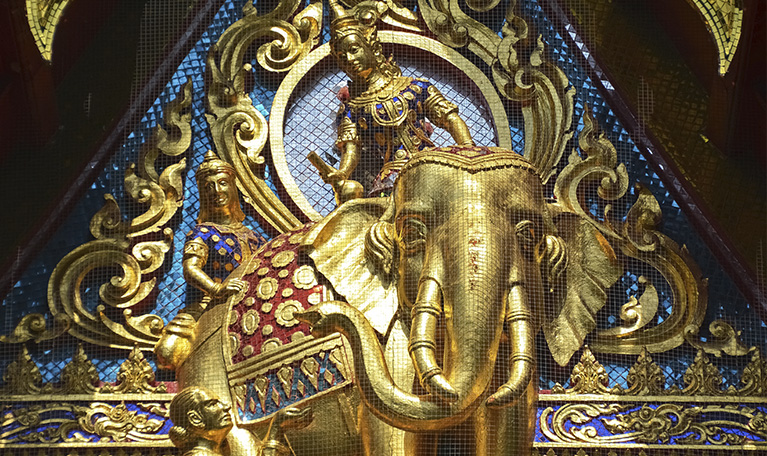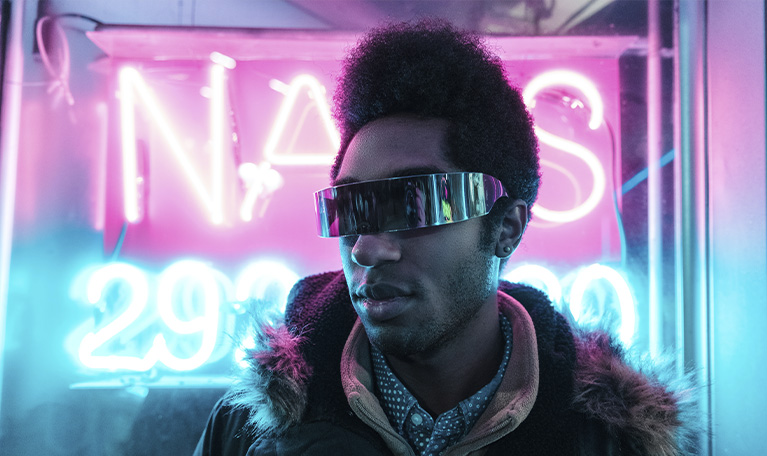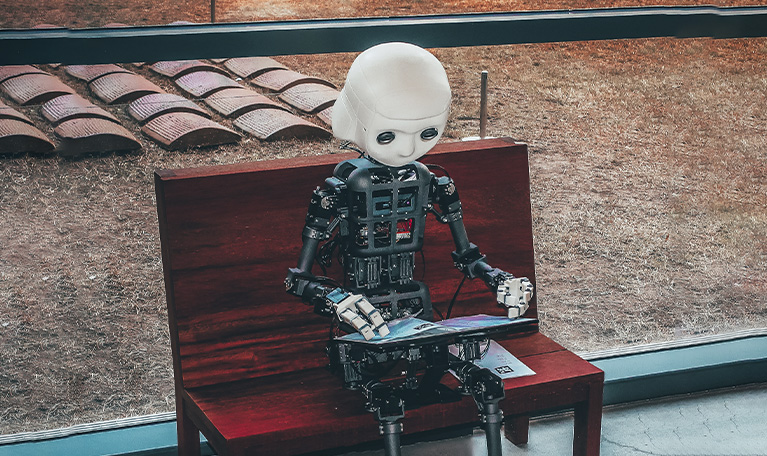The visions for the future from one of the world’s leading AI experts written four-handed with one of China’s leading science fiction authors
Central ideas:
1 – AI will be the great defining development of the 21st century. In two decades, aspects of everyday human life will be unrecognizable. And artificial intelligence will generate unprecedented wealth, revolutionizing medicine and education through human-machine symbiosis and creating new forms of communication and entertainment.
2 – However, AI will also bring new risks in the form of autonomous weapons and intelligent technology that inherits human bias, such as deepfakes, security risks, invasion of privacy, and job loss.
3 – The current moment is a watershed for AI and people need to wake up to both the radiant paths these technologies can provide and their dangers.
4 – In 20 years, we will see massive workforce displacement. How we deal with the social and economic cost of AI will be a key issue. But it is possible to move away from dystopia and toward utopia.
5 – Everyone is an author of the AI story since people have the chance to reinvent themselves. It is possible to explore other worlds and possibilities with AI, and even solve global problems such as hunger and poverty.
About the authors:
Kai Fu Lee is the CEO of Sinovation Ventures and was the president of Google China, and was also a senior executive at Microsoft, SGI, and Apple. He is also the author of the book AI Superpowers, according to the New York Times. He has been on the Time 100 list and was chosen as one of Wired’s 25 icons.
Chen Qiufan, also known as Stanley Chan, is a multi-award-winning author, translator, and content producer and curator. He also holds the position of president of the World Science Fiction Association of China. Some of his successful books include Waste Tide, Future Disease, and The Algorithms for Life.
Introduction by Kai-Fu Lee: The Real Story of AI

“Artificial Intelligence (AI) is intelligent software and hardware capable of performing tasks that would otherwise require human skill. It is, therefore, the elucidation of the human knowledge process in order to quantify people’s thinking and explain their behavior, and to understand what makes this intelligence possible. It is the last stage in humanity’s journey to achieve self-understanding.”
This is how Kai-Fu Lee described artificial intelligence 40 years ago, when he was studying for his doctorate. The author points out that advances in the practical applications of artificial intelligence have been very slow. But in the last five years, AI has become the technology of the moment.
And the big key turning point was in 2016, when AlphaGo, a machine built by DeepMind engineers, managed to defeat Lee Sedol in a Go competition, known as the Google DeepMind Challenge. Go is a board game trillions of times more complex than chess, requiring a lot of wisdom and keen intellect. The fact that an AI competitor won was a shock to many people.
The author further suggests that there are four major waves of IA, according to their application. The first of these is called Internet AI (2010), with the use of the technology in websites, apps, games, and entertainment; the second is Business AI (2014), focused on public services, finance, education, medical, and logistics; the third was Insight AI (2016), applied in security, retail, energy, smart homes, and cities; and finally, Autonomous AI (2018), focused on agriculture, robot production, and transportation such as autonomous vehicles.
Despite all the speculation involving AI, Lee takes a realistic view of the technology, believing that there are several ways that AI can contribute to society. He cites a statistic from PricewaterhouseCoopers, which says that by 2030, the financial return with AI will reach $15.7 trillion, which should help reduce poverty and hunger.
Lee points out that his optimism about AI is based on his more than 40 years of experience in research and product development for Apple, Microsoft, and Google. During this time, the author has managed more than $3 billion in technology investments. He also points out that the success of his latest best-seller, AI Superpowers, is due to the fact that he used language that is accessible to anyone.
For AI 2041, Kai-Fu Lee claims to innovate again, this time by inviting a science fiction author (Chen Quiufan) to create fictional stories that show how these AI technologies will be used in the future. The book is a forecast for 20 years after the publication of the book (from 2021 to 2041). It also makes a pun with the acronym AI, which looks like the number 41.
In preparing for the book, Lee says he created a “technology map,” with projections of when these chosen technologies would mature, how long it would take to collect data and iterate on the AI, and how easy it would be to produce this technology in various industries. Also taken into account were the challenges, and possible conflicts and dilemmas, that each would face.
With this, the two authors came up with a total of ten fictional stories. The first seven were written with a focus on technological applications of AI in different industries. The last three (plus chapter 6, “The Sacred Driver”) deal with social and geopolitical issues generated by artificial intelligence, such as the loss of traditional jobs, the never-before-seen abundance of material goods, exacerbated inequality, the trade-off between privacy and happiness, and the human search for a higher purpose.
Introduction by Chen Qiufan: How we can learn to stop worrying and embrace the future with more imagination

Qiufan begins his introduction by telling about an exhibition entitled AI: More Than Humans that he attended. This experience helped to sharpen his senses and change misconceptions he had about AI. The author mentions Amara’s law, which states that we tend to overestimate the effects of a technology in the short term and underestimate it in the long term.
Next, Qiufan attaches great importance to AI from the past, with the production of the first humanoid beings, to the present. As a science fiction author, he recognizes the weight of this literary genre and says he felt honored to have been invited by Kai-Fu Lee to write the book together with him.
Kai-Fu Lee’s project was ambitious, as Qiufan notes, but a coincidence, since he had already developed the notion of realism in science fiction some years ago. Qiufan reiterates about the value of imagining the future we want to have from realistic solutions.
Before becoming a writer, Qiufan worked in the technology field, and this helped him to maintain his interest in this field. To write AI 2041, the two made a commitment to portray the future they would both like to build and live in. The goal was to think of solutions so that people could achieve happiness.
With this in mind, Lee and Qiufan spent hours studying various published articles, talking to experts in the field, professionals and thinkers in the IA industry. And, as the writer believes, the biggest goal of science fiction is not to present answers to problems, but rather to raise more questions, such as whether AI could help prevent a possible future pandemic by nipping it in the bud. Another question would be how to educate our children to live in a society where humans and machines coexist in harmony.
Chapter 1 – The Golden Elephant
Note by Kai-Fu Lee:
The first story transports the reader to Mumbai, India, where a family tests an insurance program that uses deep learning. It is a dynamic project that grants the insured several applications designed to improve their lives, but the family’s daughter has trouble finding love with it. The goal of the chapter is to show the strengths and weaknesses of this type of technology. The story shows that it can help a person achieve his or her goals, but sometimes creates a negative image. The story also deals with the dangers of a single company having too much information from its users, and the fact that this can be a reason for distrust for many people.
Nayana, a young girl in her first year of high school, is in her apartment in Mumbai, and downloads an app called FateLeaf, which is based on the sage Agastya, who, thousands of years ago, recorded the past, present, and future of all people in Sanskrit on palm leaves, called Nadi leaves. A company used deep learning to locate and examine all the leaves still in existence.
Since Nayana was curious to know whether or not the new boy at her school, Sahej, liked her, the young girl ended up downloading the app and typing her question into the search, “Does Sahej like me?” The answer she received, however, was “insufficient data.” In the chat group of another app, called ShareChat, her schoolmates kept talking about the new boy.
At dinner, Nayana’s mother, Riya, announces that she has purchased a new insurance policy called GI (Ganesh Insurance). All the neighbors had already bought it and it was the talk of the moment. She says that one of the reasons for this was the high cost of tuition at Rai University, which Nayana wanted to attend. And she had gotten a 50% discount on the insurance.
The great thing about GI was the various applications that helped with everyday tasks such as shopping for the house, for example. And each member of the family could access these programs. From then on, Nayana starts receiving several notifications every day, telling her “it’s going to rain today, don’t forget to bring your umbrella”.
To install the applications, however, Nayana had to agree that the insurance company would have access to several social media applications. From then on, GI started sending several advertisements for services that would solve the young woman’s problems.
Everything started to go wrong
As soon as Nayana accepted the invitation to let GI access her ShareChat, things changed. Sahej and all his friends were on the chat app. It seemed that GI did not want Sahej and Nayana to be together. Every time she searched for something related to the boy, the app would give an error.
When the young woman finally manages to set up a date with Sahej, the boy shows her the problems the app was creating for the two not to be together. Sahej’s family also had GI and he was experiencing the same problem. But the boy claims to be studying about AI to prevent this kind of problem from continuing to happen.
He explains that humans give AI a goal, and in the case of GI, it is to reduce the policyholder’s premium as much as possible. So they have to make sure that the person doesn’t do anything stupid. In Nayana and Sahej’s case, teenage dating would be one such risk.

ANALYSIS: deep learning, big data, Internet, financial applications, AI externalities
In the Golden Elephant story, the Mumbai family sees several benefits from GI (Ganesh Insurance). With the discount program that Nayana’s mother received, it seemed like a great opportunity. The young girl’s father stops smoking and starts driving better. Her brother starts eating healthier with the diabetes risk notifications. And all this thanks to deep learning, which, since 2016, was already exciting its supporters with the AlphaGo project.
What is deep learning?
Based on the webs of neurons in the human brain, deep learning builds artificial neural network software with layers of input and output data. When something new is input, there is an output that comes out the other layer. Because there are thousands of layers, a sense of depth is created, which gives rise to the term “deep”.
To identify a photo of a cat, for example, parameters will be used to allow the software to conclude what is “cat” and what is “not cat”. In the case of the insurance app, data will be used for the app to make sure that something does or does not pose a risk to the health and integrity of the insured.
Deep learning: amazing but limited capabilities
The first academic records of deep learning date back to 1967, but it took 50 years for the technology to properly take aim. Since the engine of AI is computing power, data is its fuel. And much more data is needed for deep learning than any human being will be able to carry. This is why this software can perform certain tasks better than a person.
However, it takes training in big data. The big problem is that deep learning is not the cure for all problems, as there are limitations that humans can reverse, making decisions based on experience, abstract concepts, and common sense, but deep learning does not have the same capability.
Deep learning applied to the Internet and finance
Because of the strengths and weaknesses of deep learning, the biggest beneficiaries of its potential end up being the big Internet conglomerates like Facebook and Amazon, since both of them have a lot of data about their users. This makes them a great money-making machine.
The second industry that can benefit most from this is finance, as the Golden Elephant shows. It is possible to have better financial results. In the story, Nayana agreed to let GI have access to her social networks. This allowed the software to train itself with the extra data received and improve its services.
The drawbacks of deep learning
Any technology is a double-edged sword, which can guarantee practicality, but is also lethal. In the case of the “Golden Elephant”, with the promise of lowering the insured’s premium, the insurance company, understanding that the girl’s flirtation with the boy could increase the company’s losses, the apps tried their best to sabotage the two’s relationship by causing other distractions.
One way to solve this problem would be to teach the AI about more complex objective functions. Tristan Harris once proposed using the term “time well spent,” as a metric, rather than “time spent.” The idea would be to quantify what would be a “time well spent”, “fairness” or “happiness”, for example.
Notions of fairness and bias are also another problem for AI, as the technology makes decisions based solely on data and optimizing results. Some experts point to a certain bias against women in algorithms, and Microsoft has also been criticized for its treatment of minority groups.
And the last drawback is the issue of justification and clarification. While people can explain why they made a certain decision, it is difficult for an AI machine, since the reason behind something is based on millions of data analyses.
Chapter 2 – Gods Behind the Masks
Note by Kai-Fu Lee:
The story revolves around a Nigerian video producer, who is hired to make the perfect deepfake with dangerous consequences. This is a part of AI that trains computers to see something that doesn’t exist in a very realistic way. The goal is to show the impasse between fakers and detectives and how we can avoid being fooled.
Amaka, a video producer, receives an e-mail from an anonymous person saying he had a job for him and decides to meet this person in the Yaba district of Lagos, known as the Nigerian Silicon Valley. The mysterious author, named Chin, shows a video with millions of views titled “White vampire attacks beggar in Lagos.” After detecting that the content was not true, however, the user had been banned from the social network where it was posted.
Since there was no proof of who posted the video, the police were never able to detect that Amaka was the author of the content. Chin uses another video, in which Amaka is kissing a man (gay marriage is a crime by law in Nigeria), to threaten him to make a DeepMask, successor to the deepfake in 2041. Amaka’s job would be to create fake videos of other fake videos featuring Fela Kuti, a Nigerian singer called the father of Afrobeat, who died 45 years ago.
Masked avatars nicknamed FAKA have been producing fake videos about the singer for years, posing as Yoruba gods, spreading messages aimed at creating a “One Nigeria” and no one has ever found out who the authors of the videos are. Amaka would have to undermine FAKA’s credibility and influence by faking his speech, more or less in the same style he produces, but revealing a non-existent face.
In theory, anyone can fake a perfect picture or video fooling any anti-fake detector. The problem is just the cost of this in relation to computing power. Amaka, then, would have to create real human faces to convince someone that those people were the ones behind the FAKA. Amaka, however, dreams that her father is the god behind the mask.
Amaka starts to become afraid of the consequences of this for the future of her country, and creates a fake video with DeepMask in which she reveals, behind the FAKA, the pictures of all the gods in the Shrine of Africa, so as not to defame the author, but to give him more credibility.

ANALYSIS: computer vision, dense neural networks, deepfakes, generative adversarial networks (GAN), biometrics, AI security
“Gods Behind the Masks” is a tale of visual deception. As AI can recognize, understand and synthesize objects, it can also manipulate and create images and videos that look real. This is what happens with deepfakes.
Computer vision, however, includes skills in image capture and processing, image detection and segmentation, object recognition and tracking, as well as scene understanding and motion and gesture recognition. All of these elements were used by Amaka in the story.
Applications of computer vision
Driving assistants to prevent the driver from falling asleep at the wheel;
Autonomous stores, such as Amazon Go;
Airport security;
Gesture recognition;
Facial recognition
Smart cameras;
Autonomous drone and car navigation.
Other less common applications include intelligent photo and video editing, medical image analysis, content moderation, selected ads based on a watched video, intelligent image search, and deepfake work.
Dense neural networks (CNN) for computer vision
This type of technology, called CNN, is a specific and improved deep learning architecture with variants for images and videos. The first dense neural networks appeared in the 1980s and work in a way that maximizes an objective function by selecting the features of an image that should be exploited the most.
Deepfakes
In a video that went viral in 2018, many saw US President Barack Obama cursing his successor, Trump. It was one of the deepfakes created by Jordan Peele with the intention of showing the world the existence and dangers of technology. And to try to combat its misuse, it is necessary to understand about GAN, which is the mechanism that creates the deepfakes.
Generative adversarial network (GAN)
As the name suggests, GAN is a deep learning, but contradictory, neural network. Based on millions of images of the same being or object, it is possible to generalize something that looks like the original. There are two networks that work together: the spoofing network and the detective network. The goal of the first is to create the image and the goal of the second is to provide feedback to reduce the differences between the original material and the fake.
Human verification using biometrics
Biometrics uses special sensors to verify someone’s identity by facial recognition, gait, hand and finger geometry, speaker identification, and gesture recognition. This type of AI also includes iris and fingerprint scanning, for example.
AI Security
Various types of problems can arise on machines, such as viruses, data theft, and spam. There are also certain tricks that camouflage the AI input data or poison the system by contaminating the process, models, or training data. Therefore, it is necessary to strengthen the security of these environments.
Chapter 3 – Twin Sparrows
Note by Kai-Fu Lee:
“Twin Sparrows” explores the use of AI in education, with AI teachers cloaking themselves as a virtual cartoon character to help Korean twins reach their potential in an orphanage. Natural language processing (NLP) technology has had a major breakthrough in recent years.
At an orphanage in South Korea called the Fountainhead Institute, the Paks brothers were nicknamed twin sparrows: one the Golden Sparrow and the other the Silver Sparrow. As a way of offering companionship to each of them, the director of the facility, Mama Kim, asked them to create avatars called V-Mates.
The Golden Sparrow’s companion was nicknamed Atoman and would help the boy solve problems, play along, and make him feel loved. Atoman also encouraged the boy’s learning by passing on exercises and teaching him competitive games.
Silver Sparrow’s companion took longer to develop, because the two did not have such a close relationship. Only after nine months did he give his avatar a name and face and call him Solaris. This partnership helped Silver Sparrow develop advanced quantitative skills, especially in relation to his general cognitive skills performance, which made him do better in tests and competitions.
The positive results achieved by Silver Sparrow began to arouse jealousy in the Golden Sparrow. In an art competition, Silver Sparrow’s work was deemed better than his brother’s. Silver Sparrow then enters the V-Mirror in the conference room and erases his twin’s entire project. As revenge, Silver hacks the entire Institute system and deletes Atoman, his brother’s avatar, which is later recovered.
The twins are each adopted by different parents three years later, but Mama Kim makes the couples promise to have regular sibling reunions. Meanwhile, the boys’ avatars, Solaris and Atoman, develop over time. Although reluctant to meet because of the friction they have had, they end up missing each other.

ANALYSIS: self-supervised, GPT-3, AGI and consciousness, IA in education
The story of “Twin Sparrows” introduces the idea of personal AI companionship. In the tale, the main function of the technology is to serve as tutors for the twins. These V-Mates, as the Fountainhead Institute calls them, make use of many types of AI, but the emphasis goes to natural language processing (NLP), or machines’ ability to process and understand human languages.
Kai-Fu Lee believes that since children already have a tendency to bring dolls to life and humanize pets, it is quite likely that the reality of the story will come out of the paper.
Supervised NLP
Supervised learning is the training process that leads an AI software to produce the word “cat”. Services like Alexa, and Siri, for example, make use of it. When training this technology, it is necessary to think of all imaginable variations in the clarification and specification of the dialog.
General Self-Supervised NLP
This is a new approach to NLP, which could be seen when Google researchers invented the “transformer” in 2017, a model that can display mechanisms of attention and selective memory, classifying something as “important and relevant.” An extension of this was the GPT-3 (pre-trained generative transformer 3), released in 2020 by Open AI.
GPT-3 is a gigantic model with 175 billion parameters. The difference with conventional NLP is the comprehensive amount of skills. It is possible to have a coherent conversation with it and even ask the transformer to write a Dr. Seuss-style poem about Elon Musk. There is, however, a GPT-3 difficulty when it comes to causal reasoning, abstract thinking, explanatory statements, common sense, and intentional creativity.
An NLP Platform for Applications
Among the new NLP applications are conversational AI, which would enable private tutors for children, escorts for the elderly, customer service for businesses, and front-line agents for medical emergencies. It would also be possible to create search engines capable of answering any question accurately.
Turing Test, AGI, and Consciousness
Skeptics will say that GPT-3 is nothing more than examples of memorizing in a clever way, but that it is not true intelligence. But the point is that computers think differently from human beings. And the success of the technology is proven by its recurrent application. In January 2021, Google announced a language model with 1.75 trillion parameters, ten times more than GPT-3.
Kai-Fu Lee, however, does not believe that deep learning will become an artificial general intelligence (AGI), equaling human intelligence in every respect. Therefore, he suggests that people stop using AGI as this end of AI. But these technologies will, yes, replace humans in an increasing number of tasks.
AI in Education
It was no wonder that the story of “Twin Sparrows” is set in an educational institute. The 2020-2021 pandemic has exposed flaws in the education system, which would be easily solved with AI. Teaching requires a lot of time and dedication from teachers. Much of these tasks can be optimized from educational apps.
It is even possible to get a virtual teacher for each child, as in the case of the story in chapter 3. The idea is not to do away with the human professional, but to change the focus so that this current teacher acts as a mentor, stimulating critical thinking, empathy, creativity and teamwork. The focus would be more on the creation of emotional intelligence and the formation of character, values, among others.
Chapter 4 – Love Without Contact
Note by Kai-Fu Lee:
Inspired by the pandemic that began in late 2019, this chapter imagines that Covid-19 will continue only the initial vaccination period, with new variants appearing periodically. The protagonists’ internal conflict is to seek love, even as they want to completely isolate themselves from the outside world. The account shows how AI can break with traditional medicine and even open the door to the commercialization of domestic robots, which help reduce the need for physical contact.
Chen Nan is a young Chinese woman who has a Brazilian boyfriend, Garcia. The two had been in a long distance relationship for two years and had never met in person. As they are part of the Covid generation, with young people deeply affected by the pandemic that started in 2019-2020, they lived in fear of leaving home.
While visiting Chen for the first time in Shanghai, Garcia contracts Covid-Ar-41, a disease caused by a mutated coronavirus. Chen feels guilty about this and, with the help of a doctor and a pirate cab driver, uses digital camouflage to disguise herself, escape government control, and be able to find her beloved in quarantine.
In the tale, various humanoids are part of people’s daily lives, with household robots for cleaning, delivery, walking the dog, caring for the elderly, and even robot policemen. Both Chen and Garcia also enjoy a virtual reality game called Techno Shaman, where they met.
ANALYSIS: AI in healthcare, Alphahold, robotic applications, automation acceleration by Covid
The pandemic initiated by Covid-19 was the inspiration for “Love Without Contact”. Its long run made clear the importance of AI in the healthcare industry. The application of domestic robots and more accelerated digitization were other legacies of this period.
AI and the confluence of digital health
Modern medicine has more than doubled life expectancy from the early 1900s to 2017. The new revolution for healthcare is in digitization, which has been able to speed up AI, robotics, data science, and other portable and communication services.
Some of the examples of digitization in healthcare include the efficiency of drugs, medical instruments, clinical screening, as well as the entire radiology process. DNA sequencing is another contribution. There are also AI projects for cancer treatment to drug discovery.
Conventional medicines and vaccine discovery
Historically, vaccine and drug discovery has always taken a long time. One has to (1) use mRNA sequencing to unravel the pathogen’s protein sequence; (2) engineer the protein; (3) identify the target in this 3D structure and (4) generate the possible treatments for the disease.
AI in protein folding, screening, and drug discovery
Today, the cost for the process of developing a drug or vaccine is about $1 billion. With AI, both the cost and its time can be reduced. In 2020, DeepMind developed AlphaFold 2, one of the biggest advances in AI for science to date. Its function is to solve several proteins that previously would have taken more than 50 years to complete.
AI can be further used to utilize steps 3 and 4 in the vaccine discovery process with NLP (natural language processing) and other technological models.
Precise medicine and AI diagnostics: a longer, healthier life
The concept of “precision medicine,” where a treatment is customized for each individual, is also possible with AI. Lee believes that the technology will be able to surpass the skills of the best doctors within 20 years, especially in the areas of radiology and ophthalmology. Surgeries will also be automated. And AI will be able to help people live longer, with rejuvenation biotechnology and personalized diet and lifestyle plans.
Introduction to Robotics
Problems in robotics are not as simple to solve as in other fields of industry. But Lee says that robots will probably improve their skills, such as vision, manipulation, and movement, and that they will be more sensitive, being able to manipulate even more fragile objects.
Industrial application of robotics
Covid-19 has accelerated the use of robotics in healthcare, detecting people with fever, delivering food to quarantined patients, connecting to telemedicine, decontaminating public areas, etc. One company in China can even produce automated biology labs.
Commercial and consumer application of robotics
In “Love Without Contact”, several domestic robots help with chores, such as delivery, disinfection, cleaning, caring for the elderly, and walking a dog. Some of them already exist in 2021, delivering food to quarantined patients in Beijing, for example. 100% automated vans are being tested in Silicon Valley. They already have waiter robots in restaurants, and others performing various functions in hotels.
Digitalization of Work and AI
The pandemic has shown a great increase in functions that are now being performed digitally. Tasks that were once seen as essentially face-to-face have proved possible to perform remotely. Videoconferencing services were largely responsible for keeping the world functioning in times of “stay at home”. In chapter 8, “Job Savers,” the author will explore how to deal with the automation of services.
Chapter 5 – My Creepy Idol
Note by Kai-Fu Lee:
“My Scary Idol” depicts the future of entertainment, where games become immersive and not much distinction is seen between the real and virtual worlds. In Tokyo, a fan investigates the death of her idol, with the help of the boy’s “ghost,” who has returned with the help of AI and virtual reality. Is it possible to create your own virtual version in 2041?
Aiko, a young Japanese journalist, discovers that her idol, Hiroshi, has been found dead. The boy’s ghost, however, turns up at her house and asks her to help him unravel the crime. From then on, Aiko begins to interrogate those involved. The autopsy shows that the singer had been poisoned.
To achieve her goals, Aiko uses virtual reality (VR), augmented reality (AR), and mixed reality (MR), also called XR, technology designed as ubiquitous. She can walk around the crime scene virtually. And, with her XR lens, Aiko discovers that the singer had committed suicide because he could not stand the social pressure.
This was all just a game, in which Hiroshi had created an avatar that was a mix between real and virtual. When the singer was at the height of his fame, he decided to have a stage persona so that he would not be forgotten, which he nicknamed Hiroshi X. A few years earlier, Hiroshi and his best friend, Taiyo, launch a company called Viberz, with virtual games with various types of XR vision
ANALYSIS: Virtual reality (VR), augmented reality (AR), and mixed reality (MR), brain machine interface
What is AR/VR/MR (XR)?
The term XR corresponds to the junction of three types of technology: VR, AR, and MR. Virtual reality is a cybernetic environment in which the user is inserted; AR is a reality based on what exists, captured by cameras and with other layers superimposed. MR would be the possibility of adding objects virtually to an existing physical reality.
AR/VR/MR (XR) technology: our six senses
An XR experience is immersive and interactive. It can be done with the help of helmets or goggles, with transparent lenses, with at least 80o magnification. Several advances have been seen in the last decades, with 5G and Wi-Fi. The author predicts that XR lenses will have more public acceptance than glasses, as in history, since the lenses are invisible and you feel it is more real.
The same goes for headphones, which will be almost imperceptible, as well as sensors that help the body get the sensations it would have with a wind, hug, or pain, such as tactile gloves, aroma emitters, flavor simulators, and others.
Beyond the six senses
One of the devices designed to prevent the risk of falling in XR is the omnidirectional treadmill (ODT). Lee anticipates that this type of technology will be used more in hyper-realistic gaming, but Microsoft HoloLens already provides immersive capabilities and should be used for military and medical purposes. One of the problems that the XR technology will have to reverse is the issue of physical discomfort and nausea reported by some users.
XR’s biggest challenges: brain-machine interface and holograms
The most natural way to see virtual reality is with the naked eye, as in a hologram. Unfortunately, it is still quite limited and is not expected to have as many advances until 2041 as lenses or glasses. Elon Musk envisions more uses of XR in the naked eye, while Kai-Fu Lee disagrees.
Ethical and social issues with XR
If someone wears XR all day long, they will be sharing millions of pieces of data, which could be an ethical dilemma. Cell phones and apps already do this, but XR will be a new level. You have to think about the consequences and possible culprits of a problem generated by a virtual character misguiding its user, for example.
Chapter 6 – The Sacred Driver
Note by Kai-Fu Lee:
The story that takes place in Sri Lanka deals with the issue of the autonomous driver. A gamer is hired for a mysterious project, which exposes that both humans and AI can make mistakes.
Chamal, a young gamer living in the city of Colombo, Sri Lanka, is given a project by a company called ReelXCenter, run by Chinese people. His job was to drive autonomous cars and he had some missions and routes to accomplish. For example, one day he had a case of a tsunami that was about to hit the coast of Singapore and he had to save the passengers.
The boy thought it was a game, but discovered that he was actually driving real cars. He then goes to the company’s headquarters in Shenzhen, China, where he discovers the existence of ghost drivers who act in situations where there is no other solution. Chamal’s uncle Junius had been working with this for years.
On this visit, a terrorist attack had taken place, and although Chamal wanted to give up doing this work because he did not find it ethical, he ends up driving the autonomous car to help the people in the surroundings. The newspapers end up dubbing him the “holy driver” for saving the lives of eleven people.
ANALYSIS: autonomous vehicles, smart cities with full autonomy, ethical and social issues
Because it is a complex technology, Lee believes that autonomous vehicles will only reach maturity around 2041, even after Google and other companies have already begun to invest in a commercial use for this type of technology.
What are autonomous vehicles?
It is a car that drives itself. Automotive assistive technology has been graded from L0 (no automation) to L5 (optional steering wheel, no driver). L1 would have a single function activated only at the driver’s command; L2 could perform multitasking; L3 would be when the AI requests that the driver resume control in certain situations; with L4, the AI could drive the entire route without problems.
When will fully autonomous vehicles (L5) emerge?
You can already see a good amount of automation in this sector, but vehicles from L0 to L3 don’t exist until 2021. With advances in the area, a car will even be able to communicate with other autonomous vehicles to warn of an accident, for example. The changes will help reduce congestion, fossil fuel consumption, and air pollution. The problem will be the millions of professionals who will lose their jobs because of this, such as drivers and gas station operators.
Non-technological issues that may prevent L5 cars
Ethical problems, popular mistrust, and the loss of millions of jobs are some of the reasons an L5 may not get off the drawing board. Issues to think about also include a possible fatal accident. Should someone be killed in an accident, who should be blamed? Laws would be needed to protect the population from unsafe apps. But Kai-Fu Lee believes that there are more benefits than harms to full vehicle automation.
Chapter 7 – Quantum Genocide
Note by Kai-Fu Lee:
Disruptive technologies can be both Prometheus’ fire and Pandora’s box. The villain of “Quantum Genocide” is a European scientist who becomes unbalanced after a personal tragedy related to climate change. He then uses quantum computing and other technology to seek revenge and causes several terrorist attacks throughout Europe.
With several European cities as a backdrop, such as Keflavík (Iceland), The Hague and Amsterdam (Netherlands), Paris (France), among others, a mad scientist manages to cause a major genocide, with AI-enabled weapons such as drones and the like.
The tale begins with an Icelandic hacker, named Robin, who realizes that there has been one of the biggest virtual bank heists of all time, with the theft of a virtual wallet from the creator of Bitcoin. The person behind it is Marc Rousseau, a scientist specialized in quantum physics, who lost his sister three years earlier to a network of criminals related to climate change.
He decides to study more about quantum computing, so that he can create tens of thousands of slaughterhouses and commit genocide against a group of people. It is a meticulous scheme, with the help of the most advanced level cryptography data channel, in a drone extermination program in several cities around the world.
ANALYSIS: quantum computers, Bitcoin security, autonomous weapons, and existential threat
“Technology is essentially neutral. It’s people who use it for good or evil,” states Lee. Several types of technologies are cited in “Quantum Genocide,” the main one being quantum computing, which has an 80% chance of being up and running by 2041. Its impacts, Kai-Fu Lee, believes, should be greater on the world than AI. Autonomous weapons are also likely to start being used and could become a threat.
Quantum Computing
Also called QC, quantum computing is a new computing architecture that uses qbits (quantum bits) instead of bits. The help of quantum mechanics makes this technology have two superior abilities: superposition and entanglement. This makes these computers much more efficient in achieving solutions to a given problem.
Advances in this area have still been very slow since 1998, when it started to be developed. IBM and Google have been experimenting in this area and Kai-Fu Lee predicts that by 2041 we can have fully functioning QC. And one of its best applications will be in drug discovery.
Applying quantum computing to security
The story further focuses on the theft of a Bitcoin wallet. Although the whole process is encrypted, which guarantees the security of the virtual currency, all this changes with quantum computing, because with it, it is possible to generate private keys from any public one, with similar algorithms. The old format of the cryptocurrency, called P2PK opens up loopholes for these kinds of problems, which has been solved with the new P2PKH standard.
Quantum-resistant algorithms could be used to give cryptography an “upgrade” and this already exists, in fact. The problem is that it is still very costly. But Kai-Fu Lee hopes that this will start to be implemented as soon as possible.
What are autonomous weapons?
Autonomous weapons are the third revolution in terms of warfare apparatuses. The first was gunpowder and the second was nuclear weapons, as Lee points out. One example of this type of technology is the IAI Harop in Israel, which is programmed to fly over a specific area and search for targets using explosives, nicknamed “Shoot and Forget. The author believes that this type of ammunition will quickly develop.
Pros and Cons of Autonomous Weapons
There are three main benefits of autonomous weapons: saving the lives of soldiers in a possible machine war; helping to focus only on the larger enemy, avoiding killing civilians, children, and others; and it can be used against assassins and criminals. Problems with this technology, however, include: being used by the wrong groups; the fact that it can determine the exact perpetrator of the attack; as well as the fact that it would set the precedent for a genocide, such as the one in history, which focused on a group of people.
Autonomous weapons: a potential threat?
Lee assumes that autonomous weapons are a greater danger than nuclear weapons because they do not follow deterrence theory, creating an element of surprise from the first strike. Attacks using this new technology could lead the enemy to use a direct response, which escalates until it creates a nuclear war.
Possible Solutions for Autonomous Weapons
There are three possible solutions to avoid a disaster: 1) making sure that any lethal decisions are made by a human; 2) banning them, which is already being called for in several campaigns; 3) regulating these autonomous weapons by auditing violations of these rules.
Chapter 8 – The Job Saver
Note by Kai-Fu Lee:
This story explores a problem that has caused a lot of headaches: what will happen to the jobs of humans after AI advances in various industries. A new market will eventually emerge, with different jobs for these workers. In a post-automation era, which jobs are at risk and how will humans be able to thrive?
The scene is Silicon Valley, at a job placement agency, where trainees learn that the 2020 pandemic was the trigger for the process of automating activities. Jennifer Greenwood is one of the young women going through this process. Her father had lost his job and was replaced by an AI.
Jennifer ended up specializing in outplacement and a year later became a junior specialist. The young woman had managed to prove her ability in the function, denouncing irregularities of her superiors, and doing field research, visiting protests of workers revolted by the machines that replaced them.
In the end, the tale is about a prototype created by Michael, Jenny’s co-worker, that would help in business efficiency, to detect more human talent and optimize the reallocation of resources, identifying the inevitable tendency of having to lay off more people.
Basic citizenship income: universal cure?
An old idea that has come back on the agenda is that of the basic citizenship income, which would be a sum of money paid to each citizen through the government of his or her country, with the aim of ensuring that his or her basic needs are met. And who would pay for this would be the big companies and the richest people, through taxes. Lee points out, however, that this is a dangerous measure, because “you would be giving the fish, not teaching how to fish.
The key point: what can’t AI do?
There are three areas in which AI cannot perform as precisely and which humans do better: creativity, empathy, and dexterity (or tasks that require precise visual and manual coordination). The best tasks for humans will be those that require both creativity and social skills, such as the roles of Michael and Allison in the short story “The Job Savior.”
Another example would be in a classroom, the AI could help with routine tasks, such as offering standardized lessons or an exercise correction routine, while the human teacher should focus on social tasks and developing emotional intelligence.
How can we transform the human workforce?
Dr. Lee talks about the 3Rs: relearn, recalibrate, and rebirth. Re-learn refers to relearning work areas in the context of AI; recalibrate is about how to navigate the world of AI; and rebirth is about being able to focus on what humans are best at: creativity, compassion, and humanity.
Toward an AI economy and a new social contract
The focus for the coming years must be to reduce unemployment as efficiently as possible. To do this, we need to think about how people will learn, grow, and specialize in less routine and more socially focused tasks. In this way, humans will be able to be promoted for their capabilities.
Chapter 9 – Happiness Island
Note by Kai-Fu Lee:
While AI can generate wealth and development, is it possible to bring happiness? A member of Middle Eastern royalty tries to use technology to build an elixir of happiness. The chapter focuses on how the concepts of satisfaction and pleasure are immeasurable.
On an artificial island in the Arabian Sea, Russian Viktor, the president of a Russian technology company, tries to negotiate with monarchs and billionaires for an AI that is configured to help make people happy. It uses all the data about a person and adapts the experiences to suit the personality profile.
The data used is Internet of Things (IoT), wearable sensor data, camera data, personal health history, audio, social media, in short, a huge range of information. Viktor goes to Qatar where he meets Princess Akilah, who gives the entrepreneur the mission to live on the island of Al Saeida until all its inhabitants find happiness.
After a while, the princess comes to the conclusion that you cannot make everyone happy. She began to develop feelings for Viktor, who was also responding to these feelings. Viktor, in fact, realized that he could not be happy there and ends up having to leave the island. Afraid of being sentenced to death, Viktor flees to the deserts, but sensors in the smart sand caused the princess to find him in the middle of nowhere.
The princess convinces him to return to the island and use Viktor’s gaming platform to optimize the algorithms. The story presents reality with several household robots, XR glasses, and various other technologies.
ANALYSIS: AI and happiness, General Data Protection Regulation (GDPR), personal data, private computing using federated learning and trusted execution environment (TEE)
One of the questions that arises with “The island of happiness” is whether AI can help optimize one’s personal satisfaction. The author, however, suggests four reasons why this is an issue. The first is the definition of happiness; the second is how to make this measurement; the third is the issue of data collection; and the fourth is the issue of storage security.
What is happiness in the age of AI?
We need to think about the pyramid of the hierarchy of needs, created by Abraham Maslow, which puts hedonic well-being at the bottom and eudaimonic well-being at the top. The psychologist points out that only after satisfying physiological (water, food, shelter) and safety needs, man should turn to the higher steps (love, belonging, self-esteem, and self-actualization).
In the story, Princess Akilah planned to replace Prince Mahdi’s AI of hedonic needs with that of eudaimonic needs. Viktor himself in the story was stuck trying to achieve happiness with material things (hedonic) and left the other part aside. Kai-Fu Lee believes that since nations will be wealthier in 2041, if their rulers focus on the welfare of the people, they can be guaranteed sufficient material goods.
Chapter 10 – Dreaming of Fullness
Note by Kai-Fu Lee:
With the massive use of AI in the economy, the price of products will drop a lot, and with the end of resource scarcity, poverty and world hunger should end. People will then need new goals to give meaning to their lives and live life to the fullest.
In 2041, the Australian government launches a project called Jukurrpa to give citizens various benefits for free through a social currency system that meets physical needs with a “Basic Life Card” (BLC). In addition, a credit and reward system called Moola rewards citizens for volunteer work and encourages them to “lead a life with purpose, full of love and belonging, while becoming more empathetic and compassionate.”
As Australia has already managed to achieve carbon neutrality using an abundance of green energy, there is a need to resignify existence. And in this post-scarcity situation, without hunger and poverty, virtual currency allows people to have what they need to live and play, in a mega social network.
Keira, a young Aboriginal woman who takes a full-time job as a caregiver for Alzheimer’s patients, ends up, however, discovering past traumas that remain painful. With climate change, there has been an environmental collapse in the region where her family came from.
The young woman then starts a grassroots movement called “dream4future,” which encourages and rewards great projects: restoring Aboriginal language and culture, building sustainable cities with the help of AI, and exploring Mars.
ANALYSIS: plenitude, new economic models, the future of money, and singularity
Lee posits that in a post-material, AI and energy revolution environment, current economic theory will no longer apply. He suggests that we need to reinvent our thinking, in search of “wholeness”. Although a society where everything is free or low cost seems utopian, he believes that governments will start by providing necessities such as food, water, clothing, shelter, and energy.
Over time, people will be offered more goods and services as technologies advance and costs decrease to grant new free “indulgences” each year, gradually expanding to provide a comfortable lifestyle with well-being for all, including transportation, clothing, communication, health, information, education, and entertainment.
Renewable energy revolution: solar + wind + batteries
The energy distribution is also expected to undergo a revolution with the falling costs of solar, wind, and lithium batteries. Lee believes it is possible to reduce this by 10% of what is spent today in the United States. This will lead to more clean energy.
Material Revolution: Toward Infinite Supply
The author believes that we live in an era of dematerialization, with physical products becoming more obsolete and their capabilities being transferred to digital platforms. It will be possible to eat meat from laboratories that do not harm animals, vegetables and fruits will be produced in vertical farms, synthetic biology will help produce more ecological materials, among other scenarios.
Manufacturing revolution: AI and automation
As seen in the previous chapters, AI and robots are expected to dominate production, delivery, design, and marketing services. They may become human assistants, diagnosing and healing patients better than human doctors. And entertainment should be realistic and immersive. Housing will also be planned and organized by AI. This will all lead us into the age of plenitude.
Fullness: An Inevitability Mediated by Technology
Lee says he prefers to use the term “fullness” rather than “post-scarcity” because he believes that each country should take a different period to achieve this. That era of fullness will come when resources are no longer scarce. For those who do not believe that this is possible, just think that today this is already being put into practice in certain segments of the economy.
Economic models for scarcity and post-scarcity
The premise of the current economic model is focused on scarcity. Adam Smith’s theory, for example, points out that everyone has the freedom to produce, trade, and consume whatever they want; Karl Max says that whoever controls capital ends up exploiting the working class, which leads to inequality.
With the making of scarcity, however, the current economic model ends up falling apart. Kai-Fu Lee then predicts that the future will resemble the one described in the book Trekonomics, which describes the economic model of Star Trek, with a new social contract to provide the services necessary for people to lead a comfortable life.
Money in the age of plenitude
Yuval Harari had once said that “money is the most successful story invented by human beings. Man has learned to accumulate money for thousands of years in the quest for survival and security, and it is a great status symbol. In the short story “Dreaming of Fullness”, however, one sees a new reality with Jukurrpa project, with its BLC, the Moola and the dream4future movement.
Although this credit and reward system (Moola), the “Basic Life Card” (BLC) and the dream4future movement are speculative, this is a kind of future we should aim for, with an economic model that is both inclusive and aspirational, helping to raise as many people as possible in Maslow’s hierarchy of needs.
Challenges to Fulfilment
There are three major obstacles to the age of wholeness. The first is that it would require all countries’ financial institutions to reinvent themselves. The second is that it will be difficult for companies to accept the end of scarcity. The last problem, on the other hand, is in relation to the various disruptions that will be necessary on this path.
What comes after fullness/singularity?
Some futurists have predicted that around the year 2045 humanity will reach the singularity. This is the theory that self-directed AI will grow exponentially, reaching a point where it will surpass human intelligence, a moment called the singularity by experts. Some visionaries, like Elon Musk, however, are more pessimistic about this scenario, likening it to the “summoning of a demon”.
The story of AI: A happy ending?
Lee believes in the potential of AI for both good, as we reach the age of fullness, and bad (with security risks, deepfakes, autonomous weapons and violation of privacy). The author considers that we are all protagonists in the history of IA and that we can be part of what is the “greatest achievement in human history”.
Summary: Ariane Rodrigues Annunciação
Photos: spread, Jeremy Bezanger, Alex Iby, Andrea De Santis, / Unsplash

FACTSHEET:
Title: AI 2021 – ten visions for our future
Authors: Kai-Fu Lee and Chen Qiufan
![[Experience Club] US [Experience Club] US](https://experienceclubus.com/wp-content/uploads/2021/03/laksdh.png)










![[Experience Club] US [Experience Club] US](https://experienceclubus.com/wp-content/uploads/2021/03/logos_EXP_US-3.png)







